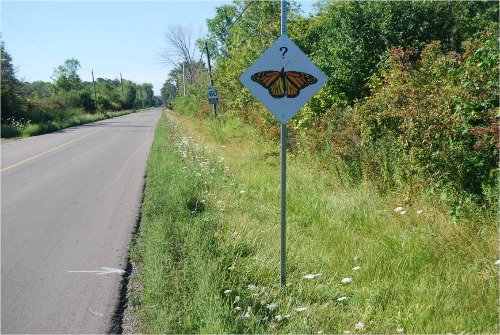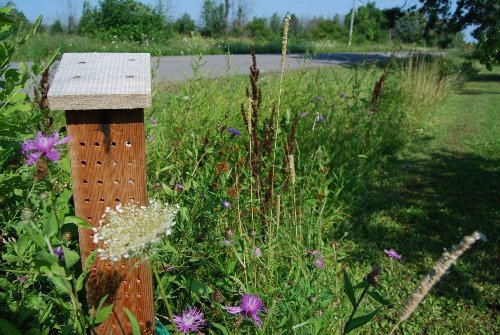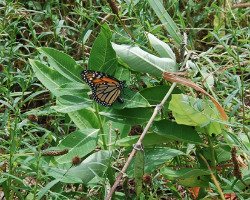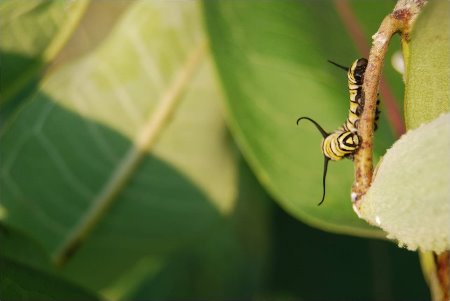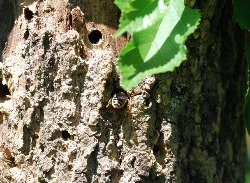The City aims to lead the community by example by developing and implementing innovative policies and programs to reduce the environmental impacts from the City's operations, including reducing energy consumption, increasing the urban tree canopy, and reducing greenhouse gas (GHG) emissions.
| Climate Change and Net Zero Goal |
|
Climate change has been identified as one of the defining challenges of the 21st century by Natural Resources Canada. Based on scientific evidence, the primary cause of the Earth's changing climate is due to the surge in greenhouse gas (GHG) emissions from human activity. All across Canada, municipal governments are taking action to reduce GHG emissions and mitigate their effect on climate change. The implementation of these local GHG emissions reduction plans encourage municipalities to create tangible changes in their local communities, while together tackling a global concern. Recognizing the impacts of climate change and the role that the City can play in decreasing GHG emissions, the City of Port Colborne commits to leading by example in its own corporate operations; adopting and demonstrating sustainable, energy conserving, climate change mitigation practices that are communicated and encouraged throughout the community. One of the City's strategic targets (see Strategic Plan 2023-2026 - City of Port Colborne) is to reach next-zero energy by 2040 through reduced GHG emissions and improved energy efficiency. |
| Urban Forest Management Plan |
|
In July 2024, Council approved the City's first Urban Forest Management Plan. After undertaking a public engagement survey in 2022, the Urban Forest Management Plan was developed by a consulting team with direct input from City staff across multiple divisions. The Urban Forest Management Plan provides a roadmap of strategic priorities for the next 5 years and beyond to meet the City’s strategic goals and was developed in alignment with the City’s Asset Management Plan for natural assets. The plan outlines long term direction for the City, reflecting community values, operational needs and priorities, and financial considerations. It highlights the current state of the urban forest, areas for improvement, and demonstrates how planting initiatives can support the City’s vision of a vibrant, healthy, and connected community. Goals of the City of Port Colborne’s Urban Forest Management Plan:
See the City of Port Colborne Urban Forest Management Plan for details. |
| Pollinator Corridors |
|
In 2015, Council approved an initiative that was brought forward by a local resident Patty Moss, with the support of the Environmental Advisory Committee, to protect the Monarch Butterfly. This initiative involved changing the timing and reducing how often the rural roadsides are cut. Allowing the vegetation to grow provides natural habitat for the monarchs so that the eggs can grow to adults and increases the number of flowers for all insects This initiative has continued and has expanded to include at least a dozen roads in Port Colborne. Monitoring by Ms. Moss has shown that the monarch butterflies are flourishing along the roadsides. Butterfly signs have been posted along many of these roads and have a QR code to link back to this page so that curious residents and visitors can learn more about this initiative.
Why roadsides?Roadside flowers are resilient species that provides much needed habitat for monarch butterflies and other pollinator insects, like bees. Roadsides are also natural corridors – not only do roads allow vehicles to get from point to point – the roadsides enable insects to travel from one area to another while providing food, water and shelter. Pollinator insects have been in decline and using these areas will help ensure a healthy population in the future.
One of the most important plants that grow on roadsides is Common Milkweed. Monarch butterflies will only lay eggs on the leaves of milkweed plants as milkweed is the only food that monarch caterpillars will eat. Therefore, it is very important that milkweed plant are not cut down before the eggs have been laid, nor before the caterpillars have developed into adults .
What is a pollinator?A pollinator is an insect, mammal, or bird that helps carry pollen from the male part of the flower (stamen) to the female part of another flower (stigma). Pollination is the fertilization process of many plants that allows them to produce fruits, seeds and young plants. Local pollinators include bees, butterflies, moths, bats, and birds. There are as many as 150 different species of bees found in the Niagara Peninsula, and approximately 400 species in Ontario, including mining, leaf-cutter, bumblebees, tiny sweat bees and carpenter bees. Approximately 75 per cent of flowering plants depend on pollinators, including many of the fruits and vegetables we eat. How can you help?Let your ditches grow, see what flowers emerge within two years. It is amazing that over 52 types of flowers grow along the roads here in Port Colborne. If you are interested in naturalizing your ditch and if you need more information please contact Patty Moss at pymoss@hotmail.com. You can also consider installing wild bee boxes or simply providing bare soil for ground nesting bees or brush for bumblebees! Various styles of wild bee boxes have been installed along the roadsides to monitor wild bee activity. By installing these boxes, we can monitor and see if wild bees are using the boxes during different periods of the season for their young.
More information on the status of wild bees in Niagara can be found on Brock University's website Gardening for PollinatorsPollinators, like most living things, need shelter, food and water. Some are specialists and only feed on specific species of plant, while others are generalists. The best way to attract pollinators to your garden is to plant a diversity of native plants – various colours, flower shapes, blooming times and species. Native plants are indigenous to a specific area, have evolved there through thousands of years of changing geological conditions which have shaped their physical features and biology. This natural evolution makes the use of native plants ideal for local climate and environmental conditions. Because of this, they do not require additional watering and thrive without the application of pesticides and fertilizers. They are the best and most desirable food source for local species of pollinators and other wildlife. You can attract pollinators by establishing a pollinator garden, or simply by adding native plants to your existing garden, water garden, potted display and even your vegetable garden. Leave flower stems and leaf litter in the garden over the winter to provide shelter for insects. Wait until there is no danger of frost to clean out the garden in the spring. If you are applying mulch to your garden, leave some areas of bare soil for solitary ground nesting bees.
Additional Resources from the Niagara Peninsula Conservation Authority (NPCA): |
Environmental Initiatives
The Port Colborne Environmental Advisory Committee offers Environmental Initiatives through different events and rebate programs.
There are a limited number of rebates available each year. Rebates will be issued on a first come, first served basis.
Tree giveaways
| Fall 2025 |
|
Port Colborne’s Public Works Department is pleased to host the Fall 2025 Tree Giveaway event in coordination with the Environmental Advisory Committee. Limited quantities available. |
| Spring 2025 |
April 17, 20259 a.m. Port Colborne's free tree giveaway in celebration of Earth Day returns to Market Square on Thursday, April 17, 2025. Beginning at 9 a.m., 500 free trees and 100 free seed packs will be supplied to residents on a first-come, first-served basis (limit of two trees per household). The giveaway is a partnership between the Niagara Peninsula Conservation Authority (NPCA) and Sassafras Farms. Grow-your-own pollinator greenhouse kits will be available for purchase in support of the local ecosystem, with City staff on site to facilitate information sessions regarding tree care and sustainability. Residents can look forward to a variety tree species (while supplies last), including:
|
Rain barrel sales
| Fall 2025 rain barrel sale |
Details coming soon!The City of Port Colborne is pleased to bring back Rain Barrel sales in 2025. We expect the sale to go live in late August 2025 and available in late September. We will be posting updates here and on social media. Stay tuned and stay connected for more information. The sale is for Port Colborne residents and will be available while supplies last. |
Grant and rebate programs
| Sewer Disconnect and Backflow Prevention Grant |
|
The City offers the Sewer Disconnect and Backflow Prevention Grants Program to assist homeowners with the costs of disconnecting storm water flows from the City's wastewater system and/or installing a backflow prevention device. The primary goals of this Program are to prevent damage to homes, help alleviate stress on municipal infrastructure, and improve overall system efficiency. |
| Water Service and Sewer Lateral Replacement Grants |
|
The City offers Water Service and Sewer Lateral Replacement Grants to assist homeowners with costs of replacing their water and/or sewer lines. These grants help homeowners address issues such as high water bills, inadequate water supply, and/or potential contamination by supporting the replacement of private water and/or sewer lines. |
| Tree planting rebate program |
|
Purchase a tree from the approved list of trees compiled from the Niagara Peninsula Conservation Authority guide to native plants and receive up to a $50 rebate. See the terms of reference on the tree planting rebate application form for more information. |
Partnerships
|
Niagara Peninsula Conservation Authority Trees For All |
|
The Niagara Peninsula Conservation Authority has partnered with local community groups, environmental agencies, and government organizations that share a common interest in helping Canada reach its goal of planting 2 Billion Trees for a better tomorrow. Together these groups have formed the Niagara Peninsula Tree Planting Partnership, striving to bring as many trees to the Niagara Peninsula watershed as possible, and we need your help!
The Niagara Peninsula Tree Planting Partnership is seeking private landowners to express their interest in tree plantings opportunities on their property to include as part of a future planting grant application and to help shape the Trees For All program. If you have land in Niagara, Haldimand, or Hamilton, we're looking for you.
|
Energy
Under the Electricity Act, 1998 all municipalities must comply with the Broader Public Sector: Energy Reporting and Conservation and Demand Management Plans regulation. This regulation requires the City to prepare an Energy Conservation and Demand Management Plan that is updated every five years, and to compile and submit their energy consumption data annually. For more information see the Broader Public Sector: Energy Reporting and Conservation and Demand Management Plans regulation
Energy Conservation and Demand Management Plan |
|
The City's first Energy Conservation and Demand Management Plan (ECDM Plan) was approved by Council in 2014. Building on the successful foundation laid by the City's 2014-2019 and 2019-2024 ECDM Plans, the most current ECDM Plan was approved by Council in June 2024. About Port Colborne's ECDM PlanThe purpose of the ECDM Plan is to outline specific actions and measures that will promote good stewardship of our environment and community resources in the years to come. The Plan accomplishes this, in part, by looking at future projections of energy consumption and reviewing past conservation measures. In keeping with Port Colborne's core values of efficiency, concern for the environment and financial responsibility, the ECDM Plan outlines how Port Colborne will reduce overall energy consumption, operating costs and greenhouse gas emissions. By following the measures outlined in this document, we will be able to provide compassionate service to more people in the community. The ECDM Plan is written in accordance with O. Reg. 25/23 of the recently amended Electricity Act, 1998. Achievements and goalsEnergy conservation efforts from 2014 to 2019 achieved the following:
More details on these projects and others success stories can be found in the 2014-2019 EDCM Plan, which was approved by Council in June 2019.
Through past conservation and demand initiatives, the City has achieved the following results since 2019:
This active management of energy-related costs and risks will provide a significant economic return and will support other key organizational objectives. With this prominent focus on energy management, by implementing recommended initiatives, COPC can expect to achieve the following targets by 2029, compared with 2023:
Read the full ECDM PlanSee the 2024 ECDM Plan for more information on targets, initiatives and more.
|
| Annual Energy Consumption and Greenhouse Gas Emissions Reports |
|
The City produces an annual Energy Consumption and Greenhouse Gas Emissions report. The report includes energy consumption data (electricity and natural gas) and greenhouse gas (GHG) emissions for all City facilities that are heated and/or cooled. The data from two calendar years previous is used for each annual report (i.e., 2017 data reported in 2019, 2018 data reported in 2020 and so on). The City must submit the report to the Ministry of Energy, Northern Development and Mines. Reports are available free of charge at the Engineering and Operations Centre, located at 1 Killaly Street West, or by clicking on the report links below:
|











